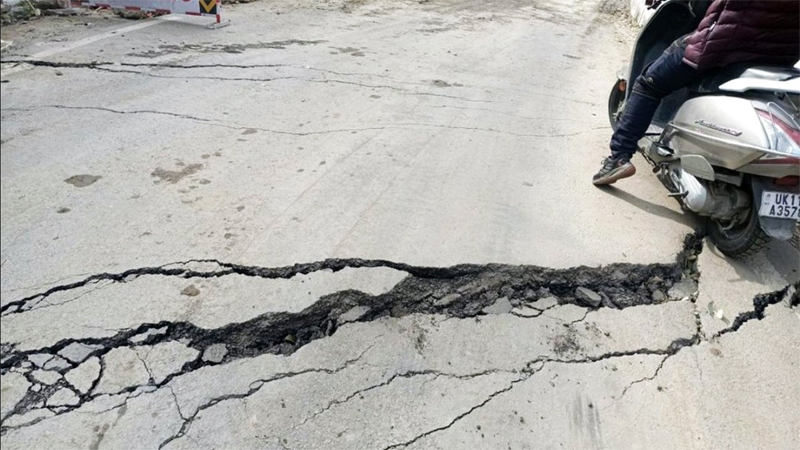It’s a routine exercise DCs perform: Div Com Jammu
Bivek Mathur
JAMMU, Feb 7: Even after recurring instances of earthquakes, landslides and subsidence in parts of Jammu and Kashmir like other Himalayan States, the UT Government is yet to prepare the plans to conduct any major study to reach at a conclusion as to why the intensity of the natural disasters has increased over the years.
Soon after taking over as the Chief Minister of Himachal Pradesh, Sukhvinder Singh Sukhu directed the concerned officials in Himachal Pradesh to identify all the earthquake, landslide and sinking zones in the UT, study the causes of the disasters and submit a detailed report to the senior ups for preparing a detailed roadmap to timely deal with such disasters in future.
“Post 2014 floods, when several infrastructural projects were taken up for restoration and for preparing the contingency plans for future disasters under the Jhelum and Tawi Flood Recovery Project (JTFRP), no major study has been conducted on this subject as on date,” Nazim Zai Khan, Secretary, Department of Disaster Management, Relief, Rehabilitation and Reconstruction told the Excelsior.
Khan, however, said that post Uttarakhand tragedy, Central Government is expected to launch certain programmes in Jammu and Kashmir as well under the National Seismic Risk Mitigation Programme (NSRMP) as most of the areas witnessing recurring earthquakes and other disasters in J&K fall under Geological Zone –IV. The areas in Zone-IV are called as High Damage Risk Zones.
Apprehensions over the possibility of future disasters due to the increase in pilgrims’ footfall at Shri Amarnath and Shri Mata Vaishno Devi Shrines Nazim Zai Khan said, “the yatris’ footfall has nothing to do with the vulnerability to risks as the number of the pilgrims visiting the holy shrines at a particular time period is monitored by the teams of experts both in Reasi and some Kashmir districts”.
“The pilgrims are never allowed to exceed the prescribed limit in these shrines,” he said, adding “moreover, population explosion in a particular risk zone area can cause subsidence but the rise in number of yatris, who are being monitored by the teams of experts, cannot cause subsidence.”
On whether instructions have been issued to people residing in Geological Zone-IV areas for preparing buildings strictly in accordance with the Disaster Management Plan in Jammu and Kashmir, Khan said, “yes, we have been doing this time and again. But, this has to be done by the Divisional Commissioners of either regions or the District Development Commissioner(s) concerned, who are the heads of the Divisional and District level committees on the Disaster Management.”
Divisional Commissioner Jammu, Ramesh Kumar also said that the District Development Commissioners in the quake and landslide affected Districts conduct routine studies on quake, landslide and subsidence prone areas.
“These studies are then shared with the senior ups and the technical experts to prepare the future plans to deal with such disasters in the future,” he said.
Prof. Sundeep K Pandita of Department of Geology, University of Jammu, said, “if the District administrations are already conducting some studies on the natural disasters and reasons thereof in Jammu and Kashmir, they should involve other institutions of excellence on this subject like the universities as well so that some roadmap is prepared to minimize the damages in such disasters.”
“But that’s not happening. Usually the administrations react after the disasters only,” he regretted.
On whether identification of the quake, landslide, subsidence and snow avalanche prone areas needs to be done like other States, he said, “this is a must-to-do-thing to understand the natural activity underneath Earth, the sequence of the disasters, and the areas under threat so that the damages are minimized”.


